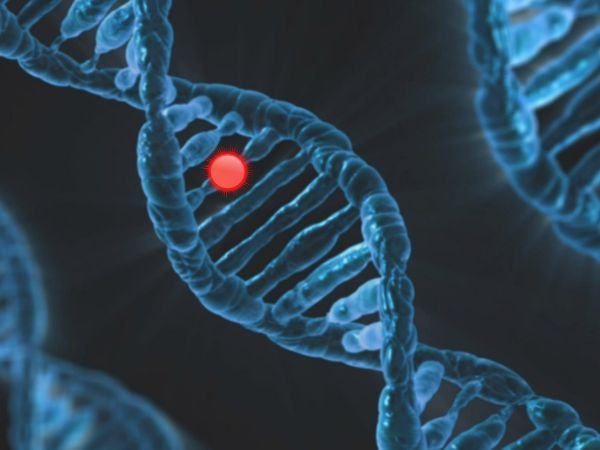Introduction: Leigh Syndrome
Leigh Syndrome or Leigh’s Disease is a neurological condition which affects most babies and toddlers. Leigh Syndrome is a genetic disease that will decimate the central nervous system and lead to deteriorating motor and mental functions. Most children who have Leigh Syndrome will survive for a few years due to breathing and control of muscles problems. Leigh Syndrome is a mitochondrial disease, i.e., a genetic disorder resulting from mutations in genes used in energy metabolism of cells. About 1 in 40,000 newborn children worldwide has Leigh Syndrome, based on a 2021 article in The American Journal of Medical Genetics. The following are discussed in this article: Symptoms, etiology, diagnosis, therapy, and investigations which have resulted in more effective treatment of leigh syndrome patients.
What is Leigh Syndrome?

Leigh Syndrome is a neurodegenerative condition that results from a defect in the functioning of mitochondria. Mitochondria are cellular organelles that generate adenosine triphosphate (ATP), the cellular energy. As brain and muscle cells lack adequate energy to function when there is a problem with ATP production, there is widespread neurological damage. In a article Neurology & Genetics (2022), over 75% of the cases of Leigh Syndrome are due to mitochondrial DNA mutation and some due to nuclear DNA mutations.
Symptoms of Leigh Syndrome
Infants of 3 months to 2 years of age show symptoms of Leigh Syndrome. Others acquire symptoms in late childhood or even sometimes in early adulthood.

Common Symptoms of Leigh Syndrome
- Developmental delay: The infants will also stop developing milestones such as crawling, walking, or even sitting.
- Loss of muscle strength: Unable to move, muscular coordination, and weakness in limbs.
- Seizures: Coughs non-stop as a result of brain deformity.
- Difficulty with swallowing: Most children are unable to swallow food to eat and liquids to drink and show malnourishment and weight loss.
- Respiratory distress: Respiratory failure in certain children, and this is one of the major causes of death in patients with Leigh Syndrome.
- Dystonia (involuntary movement of muscles): Rigidity, twitching, or lack of coordination.
- Deafness and blindness: Deafness and blindness in most of the children and development of the disease.
- Lactic acidosis: Dysregulation accumulation of lactic acid in the blood, which results in nausea, painful stiffening of the muscles, and labored breathing.
Etiology of Leigh Syndrome

Leigh Syndrome is caused due to the genetic mutations that affect the production of energy via mitochondria. Over 75 gene mutations give rise to Leigh Syndrome, but the most common among them are MT-ATP6, SURF1, PDHA1, and NDUFS4 genes to become mutated.
What Do These Mutations Make the Body Do?

- Mitochondrial gene mutations: Produces defects in ATP generation and cell energy loss.
- Nuclear gene mutations: Impacts the proteins that regulate the functioning of the mitochondria and results in degenerative damage to muscle and nerve cells.
- X-linked inheritance: Sometimes the effect of the mutation is on more boys than girls because it is associated with the X chromosome.
It is estimated to be around 20% by Nature Reviews Neurology studies in 2022 that genetic mitochondrial DNA is responsible for the development of Leigh Syndrome. And the rest is inherited from parents via nuclear DNA mutations.
Diagnosis of Leigh Syndrome

It is difficult to diagnose Leigh Syndrome since there are other neurologic disorders that can imitate its symptoms. Doctors diagnose by combining clinical examination, genetic tests, and imaging diagnostics to match the symptoms of Leigh Syndrome.
1. MRI Scans
- Magnetic Resonance Imaging (MRI) identifies brain lesions, particularly of brainstem and basal ganglia.
- Radiology Today (2021) study found that 90% of Leigh Syndrome patients show characteristic changes in brain MRI scans.
2. Genetic testing
- Physicians utilize DNA sequencing to identify nuclear or mitochondrial disease-causing gene mutations.
- American Journal of Human Genetics (2022) found that genetic screening identifies Leigh Syndrome in 80-85% cases in which suspicion is for the disease.
3. Blood and Spinal Fluid Tests
- An increased blood or cerebrospinal fluid (CSF) lactic acid level indicates mitochondrial failure.
- According to researchers in one such 2021 published study, 95% of the patients with Leigh Syndrome were diagnosed with lactic acidosis.
Treatment of Leigh Syndrome
Relief from symptoms and quality of life improvement is controversial when Leigh Syndrome cannot be treated.

1. Medications and Nutritional Supplements
- Coenzyme Q10 (CoQ10) and L-Carnitine: Both activate mitochondrial function and retard disease progression.
- Thiamine (Vitamin B1): Some individuals with PDHA1 mutations exhibit dramatic improvement on ginormous amounts of Vitamin B1.
- Sodium bicarbonate: It corrects lactic acidosis by returning blood alkalinity to normal.
The Mitochondrion 2022 clinical trial found that L-Carnitine and CoQ10 supplements raised the energy level in 30% of patients with Leigh Syndrome.
2. Occupational and Physical Therapy
- Physical therapy also avoids contractures and joint stiffness.
- Speech therapy corrects speech and swallowing defect in children.
Early physical therapy decreases loss of motor function in Leigh Syndrome patients, reports The Journal of Child Neurology in 2021.
3. Respiratory Support
- Respiratory distress secondary to weakness of the muscles is the presentation in most of the patients.
- Oxygen and mechanical ventilation may be required to assist with breathing.
Study Care in Respiratory (2022) stated that 50% of Leigh Syndrome patients require respiratory support by age 3.
4. Experimental Treatment of Leigh Syndrome and Trials
- Gene therapy and mitochondrial replacement therapy (MRT) are currently ongoing to fix genetic defects by scientists.
- Mitochondrial-targeted antioxidants are being put into clinical trials to postpone disease development.
Nature Medicine, a 2023 study, confirmed that cures in the future became feasible with new treatments to restore mitochondrial function.
Is Leigh Syndrome Treatable?
No, Leigh Syndrome is not treatable yet, but gene therapy and mitochondrial-targeted therapy are in the pipeline. Mitochondria replacement therapy (MRT) is also being researched to replace faulty mitochondria in embryos. CRISPR gene editing is also being researched as a treatment of leigh syndrome.
Sum up,
A study in The Journal of Clinical Investigation (2023) estimated that gene therapy can be the future for the treatment of leigh syndrome in a decade. Leigh Syndrome is an arguable lethal genetic neuromuscular and encephalopathic illness. Though it cannot be cured, it can be diagnosed at birth and symptomatic treatment and experimental treatment may improve the quality of life of the patient. Existing research provides hopes of curbing or delaying Leigh Syndrome in a matter of a few years. At the same time, patients and families need to collaborate with physical therapists, nutritionists, and physicians in order to coordinate treatment and control symptoms.


